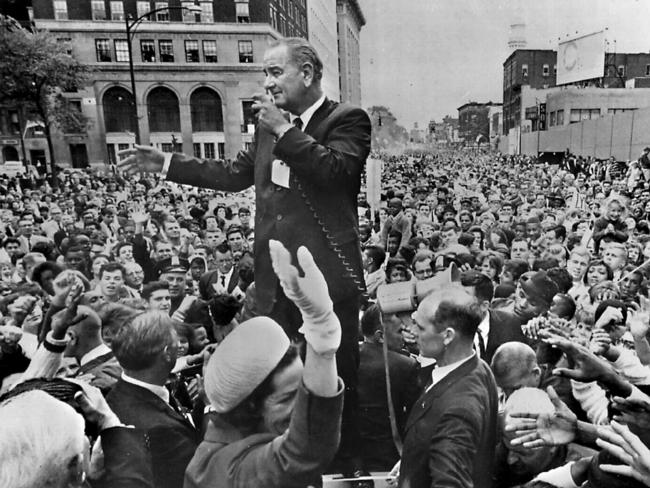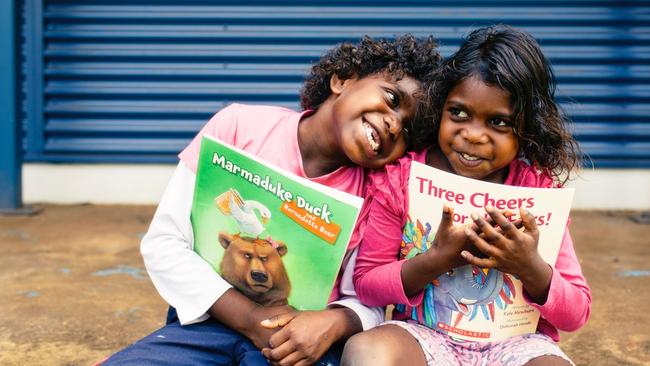The secret weapon to eliminating poverty — and we’ve had it all along
Why are some people rich and others poor? There’s an answer so simple you won’t believe it.
WHY are some people rich and others poor? Why do some people thrive and others barely survive?
It’s the question that has sparked both revolutions and wars. That has occupied Wall Street and wise minds alike.
We’re often told that there is no easy solution. But the far more scandalous truth is that there is — it’s just that you’ve probably never heard of it.
Well now that’s about to change.
Our story goes back to the 1960s, those heady days of high hopes, high ideals and even higher hippies.
Two education researchers called Dr Betty Hart and Dr Todd Risley were involved in the campaign launched by US President Lyndon B. Johnson known as the War on Poverty.
They designed a special program for a preschool in an impoverished part of Kansas City to build children’s language skills and vocabulary. At the same time they tried the same program on a group of university professors’ children.

All the kids embraced the new activities and would learn the new words being directly taught to them, but when they weren’t being actively given new words to learn the poorer kids’ vocabularies didn’t grow. The language of the professors’ kids, on the other hand, continued to expand faster and faster. The gap got wider and wider.
Why was this so? The researchers refused to believe that intelligence was hereditary and so they worked on the only other possibility — even when they got to the kids at preschool they were too late. They had to go right back to the beginning. They had to go into the home.
Three decades later Hart and Risley managed to assemble an incredibly in-depth study in which
they tracked children in the homes of 42 families from three different socio-economic groups: professional, working-class and welfare.
The plan was both simple and staggering: They would tape record everything that happened in the home from before the babies even spoke until they were between three and four years old. For an hour a month every month for two and a half years everything each child heard was recorded.

As they painstakingly transcribed and tallied every word they came to an astonishing realisation. At the age of three the children of the professional families had heard 45 million words, those in working-class families just 26 million and those in the welfare families only 13 million.
In other words, there was a gap of more than 30 million words between the richest and poorest children and it was this gap that was key to how they were able to learn, increase language skills on their own and even build neural pathways. The more words they heard, the more their brains literally grew.
The children in professional families also heard vastly more positive words compared to negative words than those in the working-class group, who in turn heard many times more than in the welfare group. For negative words the results were the reverse.
The child of a professional family would hear six positive “affirmations” in an hour for every one negative “prohibition”. For working class families the ratio was two to one. Yet the children in welfare families heard two negative comments for every one positive one.
And most telling of all, the kids’ language and behaviour mimicked that of their parents and was so well entrenched by the time they started school that the cycle of poverty would go unbroken, just as the affluent kids would learn all the language skills and traits that made their parents affluent.

Hart and Risley called this “The Early Catastrophe” yet 20 years later the catastrophe remains.
And this is despite the fact it is not necessarily about being rich or poor at all. The reason the rich kids do so well is not because they’re rich, but because they hear many more words and that is overwhelmingly more likely to happen in affluent households. The research shows that if kids from poor households that are “language rich” the results are the same.
In other words, it effectively costs nothing to give your kids the same advantage that rich kids have. You just have to talk to them early, and a lot.
How do we know this works? Well, here’s one bit of proof: I was raised by a single mother on welfare in a very poor suburb and now I’m an overpaid multimedia superstar.
But for results far more worthy and profound, take a look at the work of the Australian Literacy and Numeracy Foundation. Using the principles of the 30 million gap, they have gone to some of the most remote and disadvantaged communities in Australia, especially those with high indigenous populations, and tried it out.

Critically, they don’t just teach the kids — they teach the parents to teach the kids. To talk to them, read to them and engage with them in the same way that more advantaged parents do.
The results were staggering. In Kempsey, a tough-as-guts town in NSW, 90 per cent of children in the program this year recorded a measured improvement in “phonemic awareness” — the ability to break down words into sounds that is the very foundation stone of literacy. i.e. the sounding out of C-A-T for “cat”.
In the extremely remote Anangu Pitjantjatjara Yankunytjatjara lands in South Australia the improvement rate was 100 per cent.
As the ALNF’s Mary-Ruth Mendel says: “Children from at-risk and challenging circumstances do not have to follow the predicted pathway that research paints for them. The sky is the limit when children have robust oral language and pre-literacy skills. This is an urgent call to action for all parents to get with the agenda on behalf of their children.”
That is the secret weapon. That is the magic bullet. All we have to do is fire it.
To help ALNF close the 30 million word gap, donate at davidjones.com.au/alnf-Stellar and David Jones will match all donations up to $10,000; or buy a book from David Jones between May 22—29 and they will donate 10 per cent of sales.
TOMORROW: Football superstar Adam Goodes and his new crusade to teach indigenous kids to read




